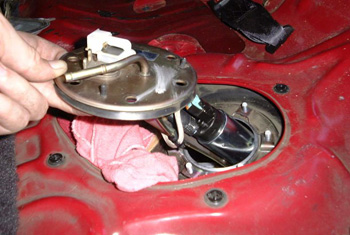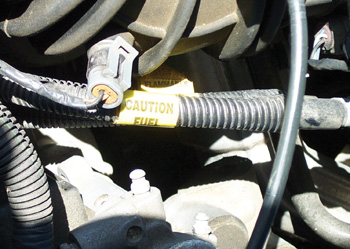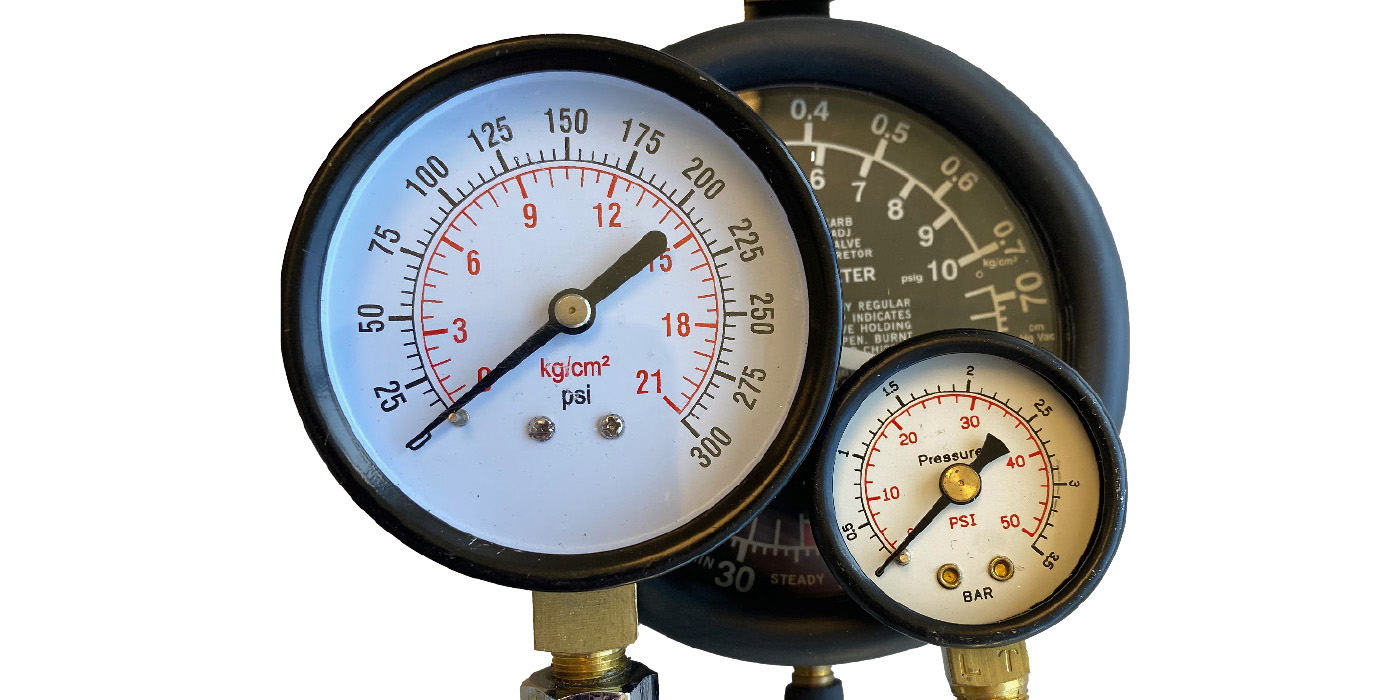 Although electronic fuel injection has become the norm since the late 1980s, some technicians still don’t understand the value of having a good diagnostic procedure for testing electric fuel pump functions.
Although electronic fuel injection has become the norm since the late 1980s, some technicians still don’t understand the value of having a good diagnostic procedure for testing electric fuel pump functions.
While this is not something a repair shop owner wants to hear, proper fuel component testing has become a growing industry issue, as unnecessary parts warranty returns continue to be a problem for manufacturers. The spin-off, of course, is that it’s often the jobber store that’s asked to take up the slack when an allegedly defective fuel pump is returned for credit or exchange.
So, for the sake of fuel pump suppliers, your customers and your own bottom lines, technicians need to evaluate the cause of a fuel system failures whenever they’re replacing a component in order to prevent the problem from occurring again, resulting in a comeback at their shop.
There can be a number of factors that contribute to repeated fuel pump replacements, so we’ll begin our discussion on reducing fuel system component returns by reviewing fuel pump testing and diagnostic procedures.
Procedure, Procedure, Procedure
Let’s begin our discussion of fuel pump diagnostics with a typical cranking, no-starting complaint. The most efficient way to diagnose a fuel-related cranking, no-start engine complaint on any OBD II vehicle produced since 1996 is to attach a scan tool to the vehicle’s diagnostic connector.
You can use the scan tool to activate the fuel pump circuit. If you can activate the pump and hear it running, than the powertrain control module’s (PCM’s) fuel pump electrical circuit is functioning correctly.
Because a crankshaft position (CKP) sensor signal is required to activate both the ignition and fuel delivery systems, you should also check for the presence of a CKP signal.
Of course, some vehicles won’t show a cranking speed or CKP signal on some scan tools, but if the engine doesn’t produce an engine speed signal, the CKP and ignition system function can be verified by simply removing a spark plug wire and testing for the presence of spark. If the engine lacks spark, try using an automotive lab scope to evaluate the CKP signal.
But, let’s say the CKP, cranking speed and spark availability pass their initial tests. If the electrical part of the fuel system is functioning correctly, the next step might be simply to remove the engine’s air inlet and squirt some aerosol throttle body cleaner into the air intake. If the engine starts momentarily, the fuel delivery system is likely at fault.
Systems, Systems, Systems
Many fuel pump warranty returns could be eliminated from shops when technicians simply follow a prescribed diagnostic procedure and understand how the various operating systems in the modern vehicle affect fuel pump operation.
The basic operating system for an electric fuel pump is relatively simple. When the key is turned on, the PCM closes the fuel pump relay, which activates the fuel pump for about three seconds to pressurize the fuel injectors. If you listen carefully, you can hear the characteristic whine of the fuel pump momentarily activating on the vehicle when you turn the ignition key on.
When the engine is started, the CKP indicates to the PCM that the engine is cranking and the fuel pump is again activated to supply fuel to the engine. When the engine starts, the CKP signals the PCM to keep the fuel pump and fuel delivery system running.
Always keep in mind that neither the fuel nor ignition system will function without a valid CKP signal.
Now let’s add the anti-theft or security system function to the fuel delivery system function. The ignition keys on most modern vehicles contain a resistor or “identification chip” that identifies the key to the PCM or anti-theft module.
If the anti-theft system malfunctions on many General Motors vehicles, the PCM or anti-theft module will deactivate the fuel pump after about five seconds of operation.
The PCMs on many Ford Motor Co. vehicles simply won’t allow the fuel pump to activate if the key can’t be identified.
Unfortunately for parts distribution, many fuel pumps have been replaced because of problems in the anti-theft or security systems.
Last, all vehicles have mechanisms that deactivate the fuel pump if the engine stalls or if the vehicle is involved in an impact collision.
Ford vehicles, for example, install an impact inertia switch between the fuel pump and pump relay. Occasionally, the inertia switch will accidentally disengage on a rough road, causing the pump to shut off. In this case, the inertia switch must be reset by pressing the button on the switch.
To shut off the fuel pump in the event of a stall, the PCM on some imports must “see” an engine running signal from the air flow sensor to maintain fuel pump operation.
On all other vehicles, the PCM must see a valid signal from the crankshaft position sensor to keep the fuel pump activated.
This quick review of operating systems should illustrate why scan tool diagnostics should be used to diagnose all suspected fuel pump failures. If the anti-theft or security system is defeating fuel pump operation, a trouble code will be stored in the PCM’s diagnostic memory.
In many cases, a fuel pump warranty return can be attributed to something as innocent as a missing chip on the ignition key or an inertia switch that must be reset per the owner’s manual procedure. 
Fuel Pressure Tests
Fuel pressure testing is relatively simple on conventional fuel delivery systems. An accurate fuel pressure gauge is attached to the fuel line or fuel injector rail and the pressure is tested key-on, engine off and key-on, engine running. The pressure must meet manufacturer’s specifications.
A low-pressure reading can be caused by a faulty fuel pressure regulator or worn pump.
Older vehicles with two-line fuel systems have the fuel pressure regulator located on the engine while more modern single fuel line systems have the regulator built into the fuel pump module itself. Because a fuel pump can produce pressure but fail a volume test, you also should test fuel pump volume to see if the pump will produce at least one pint (preferably two) per minute.
Since the popular introduction of pulse-modulated (PM) electric fuel pumps, fuel pump pressure testing procedures have changed in recent years. Pulse-modulated fuel pumps control fuel pressure by changing the speed of the fuel pump. In brief, the PCM or the fuel pump control module changes the fuel pump speed by rapidly switching the fuel pump on and off.
Because fuel pressure varies widely according to driving conditions on PM systems, most do not have fuel pressure testing ports. Instead, a scan tool and a technical information system is required to accurately monitor and diagnose the fuel pump’s pulse modulation cycle.
Installation Errors
Most auto repair shops are driven by the flat-rate labor system in which a tech is paid by the job, rather than by the hour. Consequently, in your haste to produce as many jobs per day as possible, make sure that you don’t omit some essential steps in fuel pump installation.
For example, always make sure that you check the fuel tank for dirt and water contamination — either of which can cause a repeat fuel pump failure.
In other cases of repeat fuel pump failure, make certain that the plastic fuel tank baffle is securely attached to the inside of the fuel tank. Because a loose baffle will tend to batter the fuel pump until it suffers a mechanical failure, you should also inspect the pump for a missing filter sock or other indications of physical damage.
As for electrical failures, keep in mind that the fuel pump relay usually wears at the same rate as the fuel pump. You don’t want to inadvertently create a fuel pump warranty complaint by forgetting to replace the relatively inexpensive fuel pump relay as a precautionary measure.
Also, note that many General Motors applications have experienced burned or corroded fuel pump connectors at the fuel tank. These connectors are readily available or included with the fuel pump and should be installed as part of the fuel pump replacement.
Lastly, many fuel pumps are grounded directly to the vehicle’s frame. Cleaning the frame ground and coating it with corrosion inhibitor should be standard operating procedure for servicing these systems.
Tech Tip: Cleaning Injectors on 1990-2006 Toyota and Scion Engines with Port Electronic Fuel Injection
Due to fuel quality concerns, some Toyota and Scion vehicles with Port Electronic Fuel Injection (EFI) may experience clogged or blocked fuel injectors. The following procedure has been developed to clean the fuel injectors.
Models Affected: all 1990-2006 Toyota and Scion models equipped with Port Electronic Fuel Injection.
1. If the fuel injector nozzles are visibly blocked or if the injectors do not pass the fuel injector volume test, complete the fuel injector power flush using the following instructions:
A. Before an injector cleaning is performed, it is recommended that the following items be cleaned with Toyota Throttle Plate Cleaner (P/N 00289 – 1TP00):
• Idle air control device;
• Throttle plate (both sides if possible); and
• Throttle body.
B. Bring the engine to operating temperature.
C. Disconnect the fuel pump electrical connector.
D. Start the engine. After the engine has stalled, turn off the ignition switch.
E. Disable the fuel return line by blocking the line or installing the appropriate plug in the return outlet, if applicable.
Note: Do not clamp the plastic lines.
F. Install the device adapter to the fuel line and then secure the swivel fitting on the end of the hose.
G. Make sure the ball valve on the device is turned off (valve handle is crosswise to device). Screw the can of EFI cleaner (P/N 00289 -1PF14) onto the device can adapter.
H. Open the valve on the device, start the vehicle and allow it to run until the engine stalls.
I. Turn off the ball valve and remove the empty can.
J. Place a shop towel over the can adapter and slowly open the ball valve to depressurize the system.
K. Remove the supply and return line adapters, reconnect the vehicle’s fuel supply and return lines (replacing any fuel line gaskets and seals), and connect the fuel pump electrical connector.
L. Before starting the vehicle, pressurize the fuel system and check for leaks. Run the engine for 4-5 minutes, and then snap the throttle several times to dislodge any carbon that may remain in the system.
2. Add one can of Toyota Non-Pressurized Fuel Injector Cleaner – Fuel Tank Additive (P/N 08813 – 0080DS) to the fuel tank.
3. Road-test the vehicle to verify normal operation.
Source: Some or all of this tech tip information was provided by the Automotive Parts Remanufacturers Association (APRA). For more information on technical bulletins available through APRA call 703-968-2772 or visit www.AutoBulletins.com.













